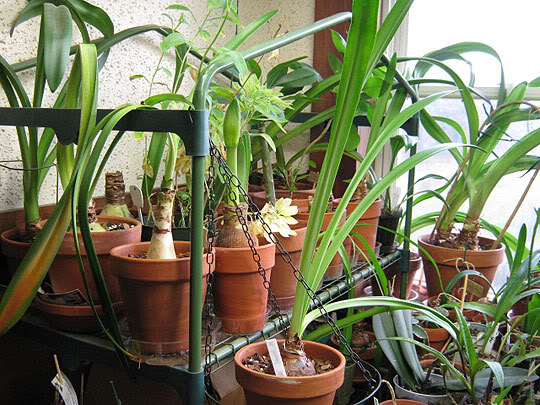Garden Pots – Plastic VS Clay VS All The Others
 As all experienced gardeners know, there are several ways in which you can plant a plant- so to speak. The material in which you put a plant can make all the difference to that plant’s successful health and growth. There are plastic pots, clay pots, glass pots, ceramic pots and even wooden pots. The question is – which one is right for your plant and why?
As all experienced gardeners know, there are several ways in which you can plant a plant- so to speak. The material in which you put a plant can make all the difference to that plant’s successful health and growth. There are plastic pots, clay pots, glass pots, ceramic pots and even wooden pots. The question is – which one is right for your plant and why?
As GrowVeg.com journalist Jenny Dore points out, plant pots are just a throwaway item to most people. They’re just bits of plastic or clay that you buy from a garden centre – they’re cheap, they’re flimsy and they’re easily replaceable. A truly dedicated gardener, however, knows that plant pots are an integral part of raising a plant from seed to maturity and of keeping it strong and healthy. Your choice of plant pot really can make a huge difference to the life of a plant, so choose wisely, check out the range from Flora Select, and don’t treat your plant pots as throwaway items. Here’s a handy guide to the different types of container – use it to choose the right one for your garden.
Plastic Pots
Plastic pots are probably the most common kind of gardening pot – they’re certainly the most widely available in gardening centres and stores. They’re popular because they’re very cheap and very lightweight, say the experts at KiddieGardens.com. However, they can be very tricky to manage when it comes to drainage. A plastic pot needs to have a lot of drainage holes, otherwise any heat that gets trapped inside will condense and have nowhere to go. It will pool at the bottom of the pot and slowly cause your plant to wilt. This is the one big disadvantage when it comes to plastic pots – they don’t breathe. They can also become very brittle and fragile if left out in the sun for a long time.
Clay Pots
Clay pots are very so slightly more expensive than plastic ones but they are still extremely affordable and easy to get hold of. In fact, if gardeners aren’t using plastic pots, they’re almost certainly using clay ones. These pots come in all sorts of shapes and sizes, usually with a glazed exterior. They’re often referred to as ‘terracotta pots.’ According to Don Janssen at the University of Nebraska, clay pots are ideal for fragile or delicate plants that are sensitive to even slight temperature changes. This is due to their thick walls and sturdy nature – they don’t blow over easily and they protect plant roots from bad weather. However, clay is porous and dries very quickly – plants kept in clay pots must be watered more often than plants kept in plastic ones. Furthermore, they might be sturdy but they are prone to breakage. If you drop a clay pot, it will almost certainly shatter.
Stone Pots
Some gardeners like to plant their pots in natural stone containers because they look very ornate and beautiful. Unfortunately, stone pots tend to be on the pricey side and they’re extremely heavy. This makes them a good choice for young trees but not such a good choice for smaller plants that might need to be moved around the garden. On the plus side, stone containers are very good insulators and will protect roots and young plants from unpredictable temperature changes.
Wooden Pots
Wood hasn’t traditionally been a popular choice for plant pots but it is getting more popular all the time. There’s one obvious reason for this and it’s the fact that wood rots. Yes, wooden containers look extremely attractive but they’re just not as easy to look after as clay or plastic ones. In fact, the wood often tends to need as much attention as the plant it holds – in order to preserve its health you must either line it with a synthetic material or regularly treat it with preservatives. Wooden containers aren’t a good choice for the casual gardener.
Author Bio: Piter Thomas has been a landscape gardener for four years. His favourite plant is Agapanthus and he uses Flora Select for top quality gardening products and advice.
Category: Home Repair







Comments (1)
Trackback URL | Comments RSS Feed
Sites That Link to this Post